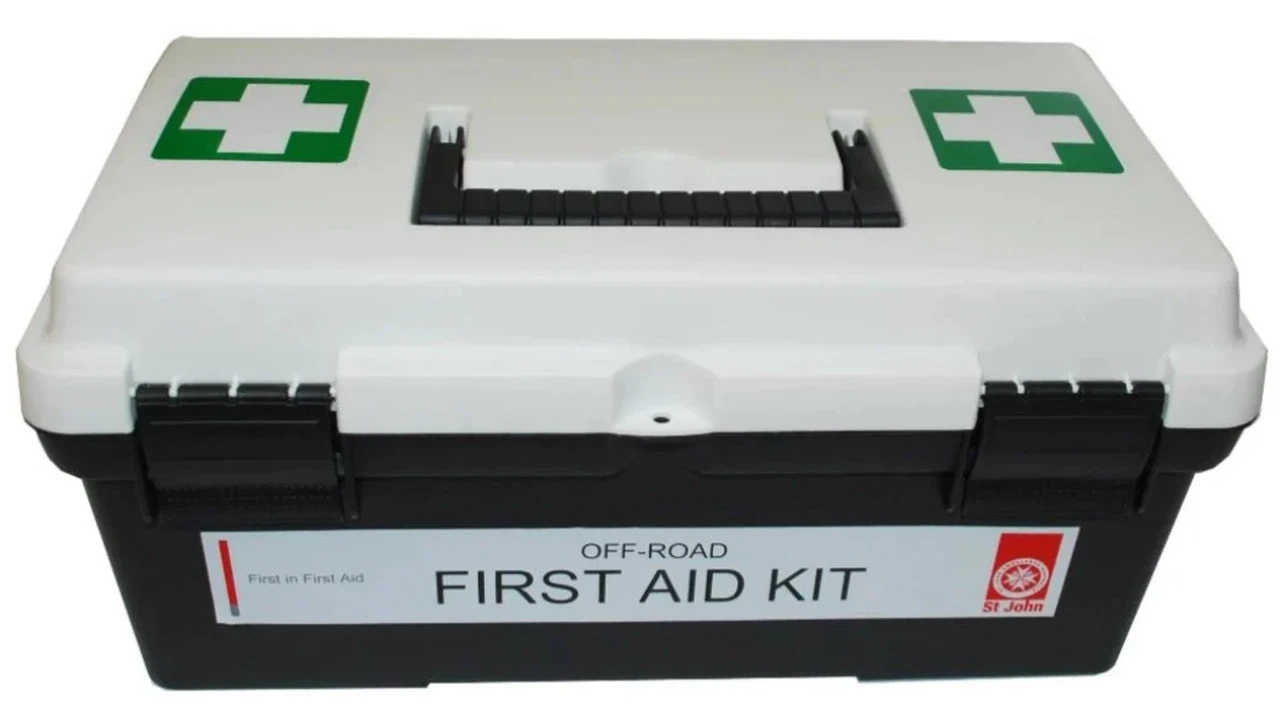Off-Road First Aid Kits What to Include
Prepare for emergencies with a well-stocked off-road first aid kit. Essential items for remote adventures.

Off-Road First Aid Kits What to Include
Hey there, fellow off-road enthusiasts! Let's talk about something super important that often gets overlooked when we're busy planning our next epic trail adventure: the first aid kit. You've got your recovery gear, your comms, your spare tire, but what about when someone gets a nasty cut, a sprained ankle, or worse, out in the middle of nowhere? That's where a comprehensive off-road first aid kit comes from. It's not just about having a few band-aids; it's about being prepared for real emergencies when professional medical help is hours away.
Think about it: you're miles from the nearest paved road, cell service is spotty at best, and someone takes a tumble while spotting, or a branch whips back and cuts an arm. These aren't just minor inconveniences; they can become serious situations if not addressed quickly and properly. A well-equipped first aid kit, combined with some basic first aid knowledge, can literally be a lifesaver. So, let's dive into what you absolutely need to include in your off-road first aid kit, some specific product recommendations, and why each item is crucial.
Essential Components for Your Off-Road First Aid Kit Safety First
When building your kit, think in layers: basic wound care, trauma, medications, and specialized items. Don't just grab a pre-made kit from a big box store and call it a day. While those are a good starting point, they rarely have everything you'll need for the unique challenges of off-road environments. You'll want to customize it based on the number of people in your group, the duration of your trips, and the remoteness of your destinations.
Wound Care and Antiseptics Keeping Infections at Bay
This is your bread and butter for most common off-road injuries. Scrapes, cuts, punctures – they happen. And in dusty, dirty environments, infection is a real concern. You'll need a variety of items here:
- Assorted Bandages and Dressings: Think beyond just standard adhesive bandages. You'll need sterile gauze pads (various sizes like 2x2, 4x4), non-stick pads, roller bandages (elastic and conforming), and adhesive tape (medical tape, athletic tape). For larger wounds, consider trauma pads or ABD pads.
- Antiseptic Wipes and Solutions: Alcohol prep pads are good for cleaning skin around a wound, but for the wound itself, you'll want something like Betadine (povidone-iodine) solution or chlorhexidine wipes. Hydrogen peroxide isn't generally recommended for deep wounds as it can damage tissue.
- Wound Closure Strips: For small cuts that might gape open, these can help hold the edges together.
- Burn Gel/Dressings: Accidents happen, even around campfires or hot engine parts. Small burn gel packets or specialized burn dressings can provide immediate relief and protection.
- Gloves: Always, always, always have multiple pairs of nitrile or latex-free gloves. Protect yourself and the injured person from cross-contamination.
Trauma Management Addressing Serious Injuries
This is where your kit goes from basic to life-saving. Off-roading can involve high-speed impacts, rollovers, or falls, leading to more severe injuries like deep lacerations, fractures, or severe bleeding. This section is critical.
- Tourniquet: This is non-negotiable for severe, life-threatening bleeding that can't be controlled by direct pressure. Products like the CAT (Combat Application Tourniquet) or SOFTT-W (Special Operations Forces Tactical Tourniquet - Wide) are highly recommended. They are designed for one-handed application and are proven effective. Expect to pay around $30-40 for a genuine one.
- Pressure Bandages: Israeli bandages are fantastic for applying direct, sustained pressure to bleeding wounds. They combine a sterile pad, an elastic bandage, and a pressure bar. A 4-inch Israeli bandage costs about $10-15.
- Hemostatic Gauze: Products like QuikClot Combat Gauze are impregnated with a hemostatic agent that helps blood clot rapidly. This is for severe bleeding where a tourniquet might not be appropriate or as an adjunct. These are more expensive, typically $40-60 per pack, but invaluable.
- Splinting Material: SAM splints are lightweight, moldable, and reusable. They can be cut to size and used for various fractures or sprains. A standard 36-inch SAM splint is around $15-20.
- Trauma Shears: These are heavy-duty scissors designed to cut through clothing, seatbelts, or even thin metal to access injuries. Don't skimp on these; a good pair is about $10-15.
- Chest Seals: For penetrating chest injuries (like from a sharp branch or metal), chest seals prevent air from entering the chest cavity, which can lead to a collapsed lung. HyFin Vent Chest Seals or Asherman Chest Seals are good options, costing around $20-30 for a two-pack.
Medications and Pain Relief Managing Discomfort and Symptoms
Even minor injuries can be painful, and sometimes you just need to manage symptoms to keep going or make the journey back more bearable. Always consider any allergies your group members might have.
- Pain Relievers: Ibuprofen (Advil, Motrin) for inflammation and pain, and Acetaminophen (Tylenol) for pain and fever.
- Antihistamines: Diphenhydramine (Benadryl) for allergic reactions, insect bites, or hives. Non-drowsy options like Loratadine (Claritin) are also good.
- Anti-diarrhea Medication: Loperamide (Imodium) can be a lifesaver if someone gets an upset stomach from questionable water or food.
- Antacids: For heartburn or indigestion.
- Topical Ointments: Antibiotic ointment (Neosporin), hydrocortisone cream for rashes or insect bites, and anti-itch cream.
- Epinephrine Auto-Injector (EpiPen): If anyone in your group has severe allergies (e.g., to bee stings or certain foods), they should carry their own, but having a spare or knowing how to administer one is crucial.
- Oral Rehydration Salts: For dehydration due to heat exhaustion or severe diarrhea.
Diagnostic and Miscellaneous Tools Being Prepared for Anything
These items help you assess the situation and perform basic care.
- Thermometer: A simple digital thermometer can help assess fever.
- Tweezers: For splinters, ticks, or small debris.
- Small Flashlight or Headlamp: Essential for working in low light or at night.
- Safety Pins: For securing bandages or slings.
- CPR Mask/Barrier: For performing CPR safely.
- Eye Wash Solution: For flushing debris or chemicals from eyes.
- Sunscreen and Insect Repellent: Prevention is key!
- Duct Tape: Because duct tape fixes everything, even in first aid (e.g., securing splints, temporary repairs).
- Small Notebook and Pen: To record vital signs, medications given, and time of injury. This is crucial information for medical professionals later.
- Emergency Blanket (Mylar): To prevent hypothermia or treat shock. They are compact and inexpensive, around $5-10.
Choosing the Right First Aid Kit Container Durability and Accessibility
The best first aid kit in the world is useless if it's not protected or if you can't get to it quickly. Your container needs to be:
- Durable: It will get bounced around, exposed to dust, dirt, and possibly water. A hard-sided case or a heavy-duty, water-resistant soft bag is ideal.
- Organized: Multiple compartments, clear pouches, or elastic loops help keep everything tidy and easy to find in a stressful situation.
- Clearly Labeled: Make sure it's obvious what it is. Red or orange colors are common.
- Accessible: Don't bury it under a pile of gear. Keep it in a consistent, easily reachable spot in your vehicle.
Product Recommendations for Containers:
- Pelican Cases: While a bit overkill for just a first aid kit, a small Pelican case (like a 1200 or 1300 series, around $50-80) offers ultimate protection against dust, water, and impact. You'd need to add your own internal organization.
- Adventure Medical Kits (AMK) Bags: AMK makes excellent, purpose-built first aid bags that are often water-resistant and have good internal organization. Their 'Mountain Series' or 'Trauma Kit' bags are great starting points for around $30-60 for just the bag.
- Plano Field Boxes: These are inexpensive, durable plastic boxes (around $15-25) often used for ammo or fishing tackle. They're not fully waterproof but offer good protection and are easy to customize with dividers.
Training and Knowledge The Most Important Tool
Having all the gear in the world won't help if you don't know how to use it. Before you head out, consider taking some basic first aid and CPR courses. Wilderness First Aid (WFA) or Wilderness First Responder (WFR) courses are even better if you frequently venture into remote areas. These courses teach you how to improvise, manage prolonged care, and make critical decisions when professional help is far away.
Practice using your tourniquet. Know how to apply pressure bandages. Understand the signs of shock, heat stroke, and hypothermia. The more knowledge you have, the more effective your first aid kit becomes.
Customizing Your Kit for Specific Scenarios
Think about where you're going and what you'll be doing. Are you in a desert with venomous snakes? Add a snake bite kit (though their efficacy is debated, some prefer to have one). Are you in a cold, wet environment? Prioritize items for hypothermia. Are you traveling with kids? Add child-specific medications and smaller bandages.
Example Scenario: Desert Off-Roading
- Additional Items: More water, electrolyte tablets, sting kit for scorpions/spiders, extra sunscreen, wide-brimmed hats.
- Focus: Dehydration, heat exhaustion, insect/animal bites.
Example Scenario: Mountain/Forest Off-Roading
- Additional Items: Tick removal tool, blister treatment, more robust splinting materials, fire starter (for warmth/signaling).
- Focus: Falls, fractures, hypothermia, insect bites.
Regularly Inspect and Restock Your Kit
Your first aid kit isn't a 'set it and forget it' item. Medications expire, bandages get used, and items can degrade over time. Make it a habit to inspect your kit at least twice a year, and definitely before any major trip. Replace expired medications, restock anything you've used, and check the integrity of all components. Keep a small inventory list inside your kit to make restocking easier.
Having a well-stocked, organized, and accessible off-road first aid kit is just as important as having good tires or a reliable winch. It's an investment in your safety and the safety of everyone you're adventuring with. Don't leave home without it, and make sure you know how to use everything inside. Stay safe out there on the trails!
:max_bytes(150000):strip_icc()/277019-baked-pork-chops-with-cream-of-mushroom-soup-DDMFS-beauty-4x3-BG-7505-5762b731cf30447d9cbbbbbf387beafa.jpg)






